How to properly grow Claudia f1 cucumbers to break yield records
Among vegetable growers, the cucumber Claudia f1 has been known for a long time. The secret to the popularity of the hybrid lies in its uncomplicated farming techniques and the stunning end result. Fruits as pictured: leveled, one size, presentable.
The taste of cucumbers can compete with many well-known varieties. Those who are forced to purchase cucumbers in the markets due to the lack of their own land are waiting for the supply of this hybrid, since the taste does not leave indifferent even gourmets.
The content of the article
General description of Claudia cucumbers
In the characteristics and description of the hybrid it is worth paying attention the fact that this culture forms ovaries without pollination. Since she has all the flowers of the female type, there is no need to fear the formation of male barren flowers.
Reference. Cucumbers are a herbaceous annual of the pumpkin family.
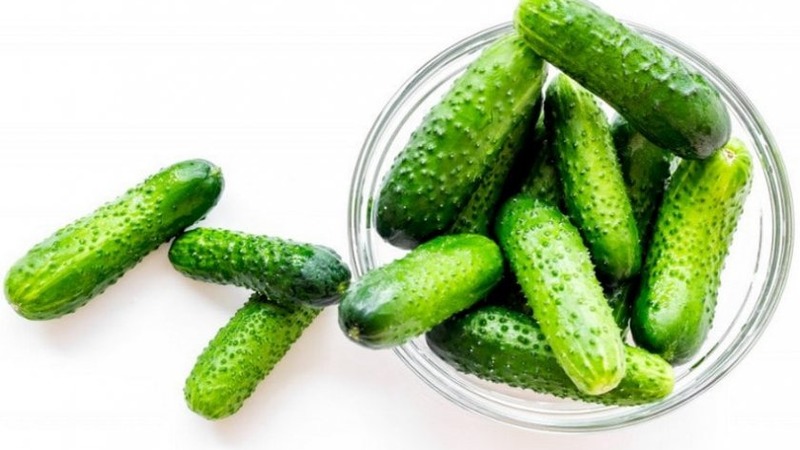
Claudia hybrid developed by Dutch breeders by Seminis. It was entered into the State Register of the Russian Federation in 2008 under the name Claudine f1. Based on this culture, similar hybrids continue to be created. One of the youngest and most popular is the Claudia Agro f1 variety.
Distinctive features
Russian gardeners appreciate the hybrid for high yield, increased resistance to diseases and universal use of the fruit. A characteristic feature can be called the methods of cultivating a culture: it is planted immediately into the ground and through seedlings.
It is interesting! People have been consuming cucumbers for over 6,000 years. India is considered the ancestor of culture.
The photo shows a hybrid of Claudius.

Calorie content, benefits and harms
The calorie content of the product is low - only 15 kcal per 100 g... 95% is occupied by structured water useful for the body, which flushes the kidneys, removing unnecessary toxins, heavy metal salts and toxins. The fruits contain vitamins A, C, group B, folic acid, minerals - potassium, magnesium, zinc. Green vegetables have no equal in fiber content.
It is interesting! Drinking structured water helps a person stay healthy longer, despite a bad environment.
Cucumbers are included in slimming diets and beauty masks, as they improve complexion, tone and moisturize the skin and have a whitening and anti-inflammatory effect.
But vegetables with such a wide range of beneficial effects can harm people with kidney disease. Do not forget about this and abuse your favorite vegetables.
Plant characteristics
Claudia f1 - mid-season hybrid of parthenocarpic type... From the moment of emergence to full maturation, 50–55 days pass. The yield is high - up to 10 kg of fruits are harvested from 1 m², and in greenhouse conditions this figure doubles.
Reference. Parthenocarpic type are hybrids with female flowers, capable of producing pollen-free fruits.

Culture exhibits increased resistance to disease, it takes root well in open ground and protected conditions.
Plant with long lasheseasily curling over the support. The leaves are wrinkled, deep green. Each flower forms a full-fledged fruit, the hybrid has no barren flowers.
Fruit characteristics
Fruit length - 9-12 cm, diameter - 3 cm, average weight - 80-95 g... The surface is ribbed, slightly pubescent and rough. The rind is tender, thin and aromatic. The pulp is firm, juicy, without voids, not watery. The taste is pleasant, without bitterness. The seeds are small and do not interfere with eating.
Presentation has 90% of the harvested crop, there is a long keeping quality of fruits and good tolerance of long-term transportation. The hybrid has long been in high demand in the sales markets, therefore it is known to most farmer entrepreneurs.
We grow cucumbers ourselves
In this section we will tell you about landing in 2 ways: through seedlings and non-seedlings.
In an open garden
Claudia cucumber seeds are sown in unprotected soilwhen it warms up to 15–17 ° С, and the air temperature rises to 21–23 ° С. If you do not plan to install a support along which the lashes of plants will curl, the distance between the rows is at least 90 cm.The optimal distance between the holes is 35 cm.
Sowing is carried out in the evening... After sowing, the soil is moistened with warm, settled water.
Planting seeds for seedlings
Timely planting and grooming ensures healthy seedling growth and rich harvest. Sowing seeds begins 30 days before transplanting into the ground.
The soil is bought in a specialized store or cook it yourself by mixing 2 parts of humus, 2 parts of peat and 1 part of sawdust. Purchased soil does not need processing, and prepared independently must be disinfected with a solution of potassium permanganate to destroy pathogenic flora.
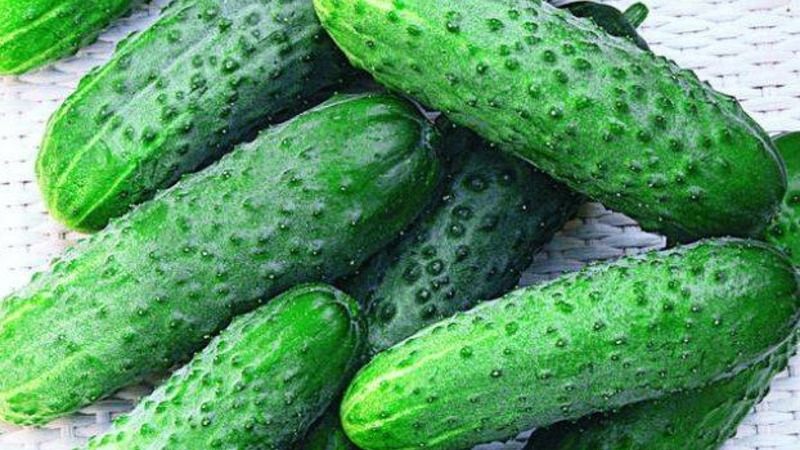
Sowing containers are only suitable for individual, since the root system of cucumber crops is too vulnerable and does not take root for a long time after planting and transplanting to a permanent place. The best option is to sow seeds in peat pots, from which the plants are not transplanted, but placed in the holes along with the container. Peat dissolves perfectly in the earth, additionally enriching the roots with useful substances.
It is impossible to prepare seeds of hybrid crops by yourself, so you have to buy them every planting season. The purchased seeds do not need processing, they are already ready for sowing. They are sown to a depth of 1.5 cm and covered with foil to create a greenhouse effect. The containers are left in a room with a temperature of at least 22 ° C.
After 5-6 days, the first shoots appear... The film is immediately removed, and the room temperature is reduced to 19 ° C during the day and 17 ° C at night. Otherwise, the seedlings will begin to stretch and look unhealthy.
Water the seedlings as the upper soil layer dries up with warm, settled water from the smallest watering can.
As soon as the seedlings grow and get stronger, the air temperature rises to 21 ° C. The maximum allowable temperature limit is 23 ° C.
When 3 true leaves appear, the seedlings are fed with nitrophos: 1 tsp. dissolved in 1 liter of warm water. Top dressing is combined with watering. After watering, the soil is superficially loosened, improving air permeability.
Transplantation and further care of the hybrid
Seedlings are transplanted into holes 35 cm deep... Before transplanting, the wells are filled with warm water. No more than 4 seedlings are placed on 1 m².
Water the plants only with warm water in the evening... Leaves may burn when watering during the day. Watering is carried out using a watering can - with this method, the water does not erode the ground above the roots. 2.5 liters of water are consumed for each seedling.
After watering, the soil is loosened and weeded... Weeding is a good preventive measure in pest control. Weed grass is an undesirable neighbor for any crop, as it absorbs many nutrients.
Top dressing is applied once every 10-12 days... Of the fertilizers used organic matter - mullein infusion, ash, urea. Of the drugs used are azophoska, nitrophoska and sodium humate. Often sodium humate is mixed with ash and urea (5 g of urea, 5 g of sodium humate and 100 g of ash per 10 l of water), and nitrophoska is mixed with mullein infusion (1 l of mullein and 25 g of nitrophos per 10 l of water).
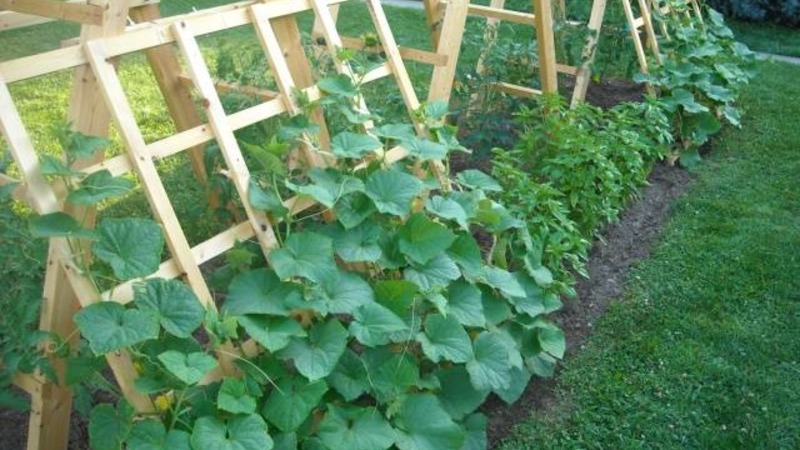
Features of care and possible difficulties
Saplings sprout long whipsso they are pinched and tied up. The main lash is limited in growth (pinched) when it reaches 1 m in open ground and 1.2 m in closed structures.
Lateral lashes should not exceed 50 cm, and their shoots - 15 cm. With this formation of seedlings, the maximum return on hybrid culture is obtained.
Other varieties of cucumbers:
How to grow long cucumbers "Chinese Snake"
Diseases and pests
The most dangerous and common diseases of cucumbers - bacteriosis, cladosporia and root rot. Bacteriosis is also known as angular leaf blight, and cladosporium blight is called olive leaf blight in cucumber.
The culture is resistant to the above diseases, therefore, preventive measures are enough to keep the seedlings healthy throughout the growing season. Preventive measures include:
- timely moderate watering;
- loosening and weeding the site;
- making dressings;
- spraying plants with 1% solution of Bordeaux liquid;
- airing the greenhouse.
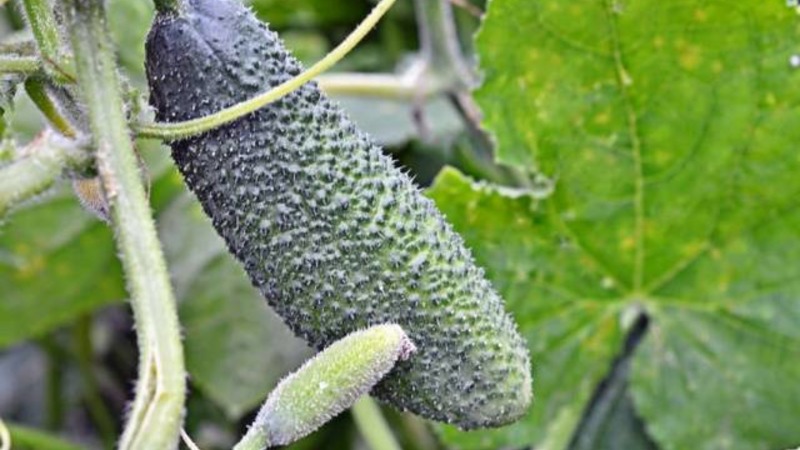
Aphids and whiteflies are dangerous pests. These insects can destroy most of the plantings.
In the fight with aphids use the chemical Inta-Vir or use proven folk methods: sprinkle the beds with chopped garlic or cinnamon.
In the fight with whitefly apply a soap solution, washing each leaf of the plant. The solution is simple to prepare: a piece of laundry soap is dissolved in 10 liters of warm water. Of the chemicals used is "Green Soap". It is safe for plants and humans.
Harvesting and application of the crop
Fruit ripening amicabletherefore harvesting is usually straightforward. Ripe vegetables are used universally: they are good in fresh dishes and no less tasty in pickles, marinades and preserves.
Due to the long shelf life, the hybrid is often bred on an industrial scale.... Cucumbers are in high demand in the sales markets and perfectly retain their presentation during long transportation.
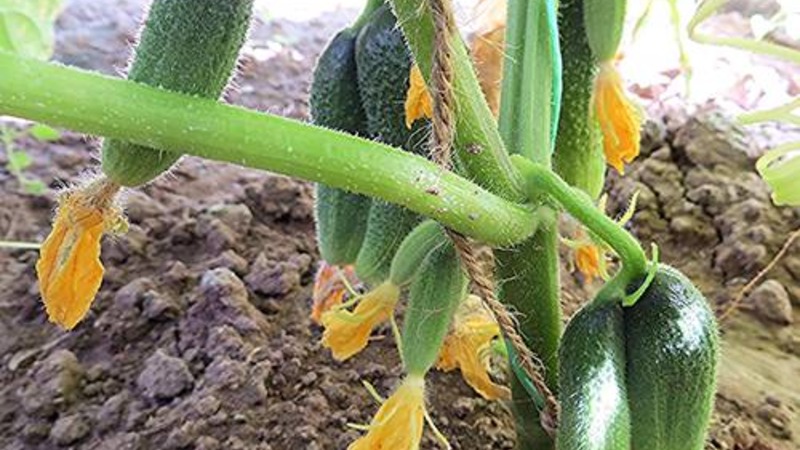
Advantages and disadvantages
Summing up all the advantages of culture, you can see that hybrid deserves everyone's attention:
- the possibility of planting in two ways - seedling and seedless;
- high immunity to diseases;
- no barren flowers;
- easy care for the entire growing season;
- high yield rate;
- great fruit taste;
- amicable maturation;
- long preservation of the presentation;
- long-term transportation;
- high demand in sales markets;
- universal application.
The disadvantages of culture include:
- impossibility of self-collecting seeds;
- shaping and garter.
Hybrid reviews
Reviews about Claudia do not allow doubting the reliability of culture... Those who planted this hybrid in their beds strongly advise it to every lover of cucumbers.

Lydia, Balashov: “I've been familiar with the hybrid for 8 years now and I'm not going to change it to any other variety. Very fruitful, cucumbers are not bitter, good in salting. It is not difficult to take care of plants, so the desire to grow these cucumbers in your garden does not disappear ".
Raisa, Cheboksary: “This is not the first time I plant Klavdia, I am very pleased with her. I grow seedlings myself, usually it turns out to be strong. Saplings do not get sick, which only pleases. The harvest is always delicious ".
Conclusion
The Claudia f1 cucumber has long been recognized as an invaluable crop in the vegetable world. Ease of care, high yield and strong immunity to diseases make the variety a favorite in the beds.
Thanks to its universal use, cucumbers are great for fresh dishes and all kinds of pickles. The inability to independently collect seeds for the next planting does not interfere with the choice of gardeners, and they continue to grow their favorite hybrid on their plots.